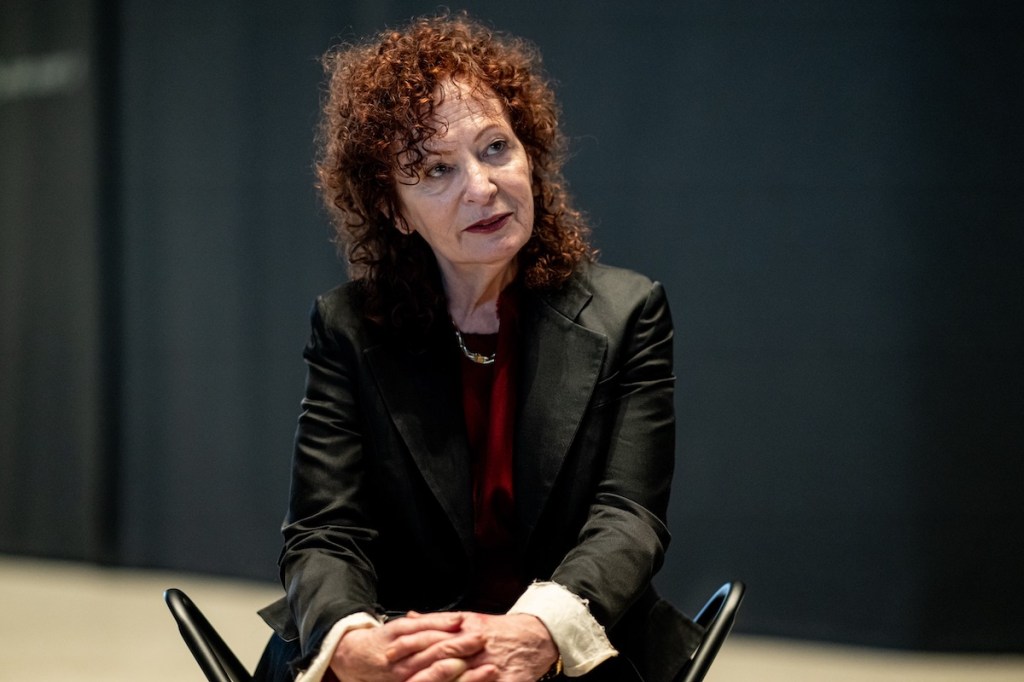“I could comfortably say than I look at 10,000 or more objects before I find one that I bid on,” Dennis Scholl said, describing the amount of work he’d put into his ephemera-based art practice. “The objects have to feel authentic without being generic. They have to appeal to everyone, not just me.”
For an exhibition at HUA International’s Berlin space debuting his artistic practice, the documentary filmmaker and philanthropist Dennis Scholl spent years trawling through auctions, memorabilia websites, and estate sales to compile a trove of ephemera he has used to create windows into a collective memory and shared past.
Each work in the show, titled “The Texture of My Memory” and on view through March 18, has a thematic center that, while specific to Scholl’s generation (he was born in the mid-’50s), resonates with viewers because of its universal nature. The death of Marylin Monroe, the genius of The Beatles, and the assassination of John F. Kennedy are represented though archival documents, contemporary newspaper clippings, and found objects. These have all been organized into 12-sided circular shapes.
Scholl is an old hand at delving into the past for an audience in the present. His documentary films have appeared in over 100 film festivals, and he has been awarded 22 regional Emmys from the National Academy of Television Arts and Sciences (12 of which make up one of the works, Untitled (Emmys), from 2022). He also works as a philanthropist via his role as chief executive of Oolite Arts, an organization that provides studio and exhibition space to Miami-based artists.
Now he’s showing his own artworks, among them Untitled Lennon McCartney (2022), a Beatles-themed piece that looks slightly abstract from a distance. In fact, it is made up of long sheets of light blue and white paper. Those pieces of paper are original royalty statements for songs written by John Lennon and Paul McCartney that date to 1971. Written on the ledger sheets in blue ink is the amount of money Lennon and McCartney for each song in different markets that year.
“’Michelle,’ ‘Yellow Submarine,’ ‘You’re Gonna Lose That Girl’—when you think of those songs you can hear them, and it triggers something very specific. That’s the idea, to take these ‘objects of desire’ and with them draw you into this collective memory we all share,” Scholl told ARTnews.

A detail of a piece constructed out of John Lennon and Paul McCartney’s songwriting royalty statements.
While the show draws heavily from 20th century pop culture, there are also works made up of historic objects that touch on broader concepts like romance.
One of the works is made from 60 love letters that Scholl acquired at auction. The letters were written from a woman to her soon-to-be husband between 1867 and 1870. The man, Captain L. B. Fish of the Union army, was working in the South during Reconstruction, locating unmarked grave sites where Union soldiers were buried during the Civil War and bringing the bodies back to the North.
“It’s beautiful, all she wants to do is profess her undying love, over and over and over with 60 letters,” Scholl said. “The Civil War is universal. We weren’t there, but we all know what it meant and anyone can appreciate that.”
Another work is made from 12 vintage Hermès scarves. These garments are pricey accessories when bought from the store; then they appreciate with age and gain a different kind of value.
“The whole practice is about trying to find the perfect object and presenting it in a way that it becomes like a talisman—a gateway to last moments,” Scholl said. “I’m trying to bring people through that portal again, and to have them be surprised and delighted by what they find.”










